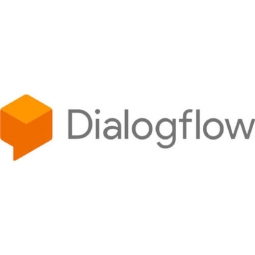下载PDF
Domino’s Enhances Customer Experience with Dialogflow’s Conversational Technology
技术
- 分析与建模 - 机器学习
- 分析与建模 - 自然语言处理 (NLP)
适用行业
- 水泥
适用功能
- 采购
用例
- 对话机器人
- 机器翻译
挑战
全球披萨连锁餐厅 Domino's 一直走在数字创新的前沿,让客户能够通过“Dom”订购披萨,Dom 是一款在线和通过公司移动应用程序提供的订购机器人。然而,随着消费者行为的变化和创新需求的增加,该公司面临着由自然语言理解 (NLU) 和机器学习提供支持的丰富对话体验的挑战。该公司需要一种可扩展并适应复杂订购流程所需的意图数量的解决方案。挑战在于考虑到客户从其丰富的菜单中订购时可能采取的多种指示。
关于客户
达美乐成立于 1960 年,是一家全球披萨连锁餐厅,在 85 多个国家/地区经营着 14,000 多家餐厅。仅在美国,他们的司机每周就行驶超过 1000 万英里,送出超过 1050 万份披萨。达美乐一直是食品行业数字创新的先驱,是首批通过其原生应用推出人工智能语音订购助手的公司之一。该公司致力于超越客户期望,不断创新以改善客户体验。
解决方案
Domino's 于 2016 年 8 月开始探索各种 NLU 解决方案,并最终选择 Dialogflow,因为它具有可扩展性和适应所需意图数量的能力。 Dialogflow 的用户友好且直观的界面是他们做出决定的另一个关键因素。凭借 50 多年的客户服务知识和 Dialogflow 的 NLU 功能,Domino's 能够构建简单的客户交互和日益复杂的订购场景。该项目范围超出了预期,但 Domino's 成功创造了可靠的客户体验。现在,任何使用内置 Google Assistant 的设备(例如 Google Home)的人都可以通过简单的语音命令从 Domino's 订购。
运营影响
相关案例.

Case Study
System 800xA at Indian Cement Plants
Chettinad Cement recognized that further efficiencies could be achieved in its cement manufacturing process. It looked to investing in comprehensive operational and control technologies to manage and derive productivity and energy efficiency gains from the assets on Line 2, their second plant in India.

Case Study
Digital Transformation of Atlanta Grout & Tile: An IoT Case Study
Atlanta Grout & Tile, a Tile, Stone & Grout restoration company based in Woodstock, Georgia, was facing challenges with its traditional business model. Despite steady growth over the years, the company was falling behind the web revolution and missing out on the opportunity to tap into a new consumer base. They were using independent software from different vendors for each of their department information and workforce management. This resulted in a lot of manual work on excel and the need to export/import data between different systems. This not only increased overhead costs but also slowed down their response to clients. The company also had to prepare numerous reports manually and lacked access to customer trends for effective business decision-making.

Case Study
Revolutionizing Construction Equipment Rental: A Case Study on ProsRent and ENO8
ProsRent, a startup that won the 'Best Financial Opportunity' and 'Best Pitch' at CodeLaunch 2016, aimed to revolutionize the way construction professionals source and rent heavy equipment. In the construction industry, project managers and contractors typically rent heavy equipment from supply companies. However, predicting inventory can be challenging, and finding the required equipment at the right time and place can be a hassle. If the preferred vendor doesn't have the required equipment, it results in wasted time and money in searching for it, often leading to higher costs due to non-preferred rates and increased delivery costs if the vendor is located far from the job site. Suppliers, on the other hand, desired access to a wider base of trusted renters that they didn't have to vet themselves and wanted to offer dynamic rental pricing based on demand and availability in their market. ProsRent's challenge was to produce a minimum viable product that was fast and first to market but also strong enough to engender loyalty and repeat business from the target market.

Case Study
IoT Solution Enhances Comfort and Energy Efficiency at Apple Valley Commons Office
Apple Valley Commons, a mixed-use office complex built in 1986, was facing significant comfort and energy efficiency challenges. The building, which houses a variety of businesses, was experiencing extreme temperature imbalances, causing discomfort to employees and clients. Despite outdoor temperatures being consistently high during summers, occupants had to use space heaters to keep warm. The electricity bills from the constant operation of the heat pump were exorbitant. The building's elevator room on the roof was also overheating, reaching temperatures of 130 to 140 degrees, causing the elevator equipment to shut down. The building's existing controls solution did not provide a front end for diagnostics or remote control. The building management was seeking a solution that could address these temperature issues, improve occupant comfort, reduce operational costs, and increase building visibility.

Case Study
Revamping EE's Legacy ERP: A Case Study on BT's Strategic Transformation
EE, even after its merger with BT, was operating its ERP estate on legacy infrastructure, hosted on the premises of a third-party supplier. This outdated system resulted in a volume-based operational model, higher time to market, longer delivery cycles, and unsatisfactory customer experience. BT recognized the need for a strategic transformation of these aging ERP systems and sought a partner who could proactively manage application services. The partner was also expected to handle development requirements associated with application management services, drive accountability, and ownership with a time and target-driven transformation of these services. BT's primary goals were to improve customer experience, reduce cycle time, and measure these improvements with precision.






